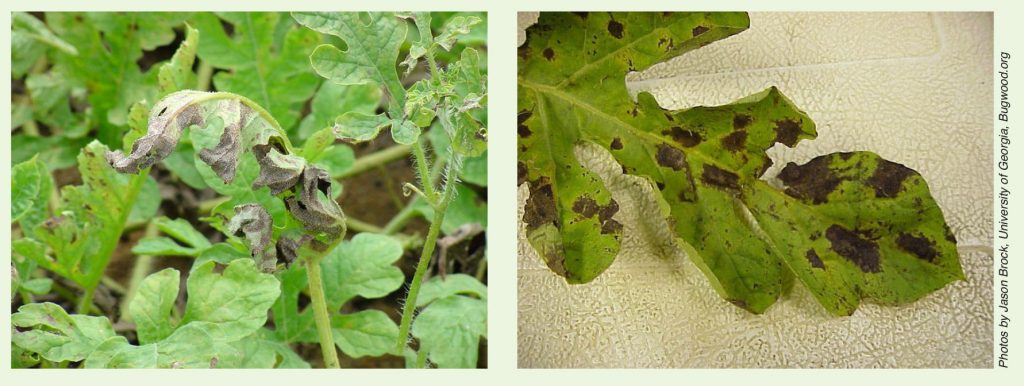
A wet 2020 has had Alabama vegetable and specialty crop producers fending off plant diseases. Even before the state encountered a couple of hurricanes, including Sally in mid-September and Zeta in late October, it had already received its share of rainfall.
Not surprisingly, the excess moisture led to numerous plant diseases, according to Ed Sikora, professor and Extension plant pathologist in the Department of Entomology and Plant Pathology at Auburn University.
Sikora Comments
“We saw quite a bit of gummy stem blight on watermelons. We also saw downy (mildew) and anthracnose on things like cucumbers as well as pumpkins,” Sikora said.
“I think most of the established growers realize that when it’s wet conditions like we had this summer, that they’re going to see more disease problems. Or they see the disease problems and realize it’s so wet, and sometimes they can’t get out to spray. Sometimes it’s too wet to spray after a storm and they can’t into the fields.”
It can be challenging for farmers to get back in the field to apply much-needed fungicides to manage any potential plant diseases following a storm.
Be Prepared
Sikora encourages producers to monitor upcoming weather conditions and apply fungicide sprays. Do this before a storm hits or before conditions become favorable for disease development.
“Don’t wait until the third of the canopy is gone due to disease before you start spraying because it’s usually a lost cause by then. Growers need to anticipate the weather conditions and what diseases they’ve historically had in their fields,” Sikora said.
“Newer growers, though, are sideswiped by these diseases because they just haven’t seen them. They get a year like this year where they’ve had adequate moisture and they’re happy. Suddenly some of these plant diseases take off on them. They don’t know what it is before they even think about spraying for them.”









